El Salvador Complete Travel (21 days)

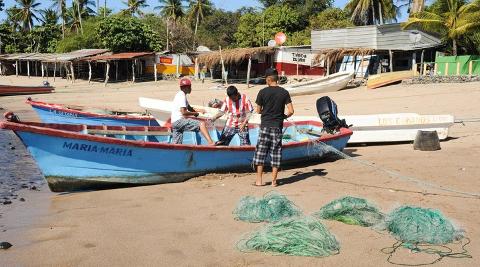





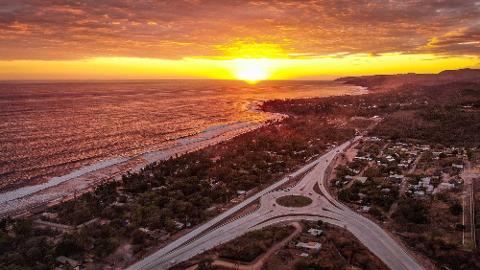
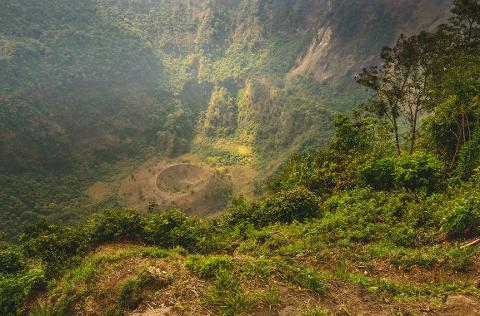
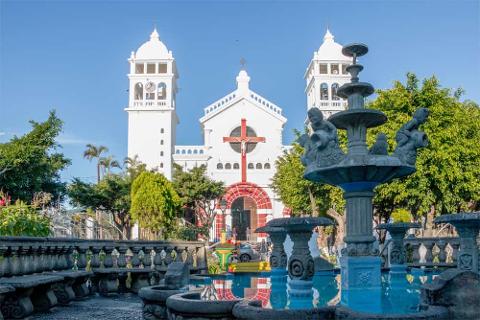

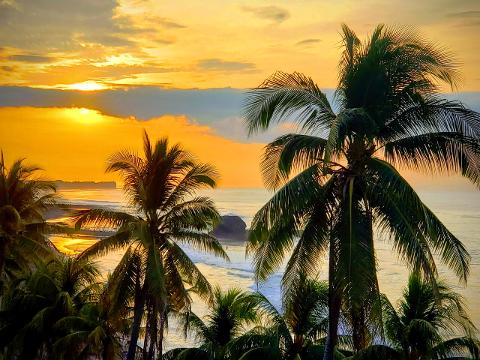
- 기간: 21 일 (대략)
- 위치: San Salvador
- 상품 코드: PNVTA1
Tour Summary:
Day 1: Arrival
Day 2: San Salvador City Tour And El Boqueron
Day 3: La Joya Forest - Alegria
Day 4: Perquin
Day 5: El Mozote and La Pila
Day 6: Gulf of Fonseca: island tour and Spider monkeys tour
Day 7: Jiquilisco Bay
Day 8: La Libertad - El Tunco
Day 9: El Tunco
Day 10: Barra de Santiago and San Rita caimans
Day 11: El Imposible National Park
Day 12: Concepción de Ataco and coffee tour
Day 13: Ruta de las Flores - Izalco
Day 14: Cerro Verde National Park - Santa Ana Volcano
Day 15: Santa Ana Cathedral - Bosque San Diego La Barra
Day 16: Montecristo National Park
Day 17: El Pital Mountain
Day 18: Suchitoto
Day 19: Suchitoto and Indigo dyeing workshop
Day 20: Archeological Tour: Joya de Cerén and Tazumal
Day 21: Departure
Tour In Depth:
Day 1: Arrival
Meet and greet with our team at the airport and transfer to your hotel in San Salvador.
Day 2: San Salvador City Tour And El Boqueron
San Salvador is the capital and largest city of El Salvador, known for its rich history, vibrant culture, and beautiful natural surroundings. As a tourist destination, San Salvador offers a wide range of activities and attractions for visitors to enjoy.
San Salvador offers a wide range of cultural attractions, such as the National Theater, which is a grandiose building with a rich history and it's a great place to catch a play or a concert. The National Palace, which is the seat of the President of El Salvador, is also a must-see attraction. It is an impressive building that was built in the early 20th century. The city also offers a wide range of dining and shopping options. At noon we will sample traditional Salvadoran cuisine at one of the many local restaurants, and we’ll also explore the local markets to admire the variety of local crafts such as textiles, ceramics, and woodcarvings.
After lunch we’ll go to El Boqueron National Park, a protected area located just a short drive from the city. The park is known for its stunning views of the surrounding landscape and the city.
Overnight in San Salvador
Day 3: La Joya Forest - Alegria
We’ll leave San Salvador and will go to the Bosque La Joya, a beautiful natural protected reserve and not well known among tourists. Bosque La Joya covers an area of over 2,000 hectares and is home to a diverse range of plants and wildlife. La Joya reserve is a top destination for people who like nature, hikers, and birders. After a satisfying walk, we’ll go to Alegria, a small town which is known for its picturesque streets. The town is also known for its traditional festivals, such as the "Fiesta de la Alegría," which is celebrated every year in August and it is a great opportunity for visitors to experience the local culture and traditions.
Day 4: Perquin
The Ruta de la Paz, or "Route of Peace," is a scenic driving route that takes visitors through some of the most important historical and cultural sites in El Salvador. The route runs through the departments of Morazán and Chalatenango, and it is known for its stunning views of the surrounding landscapes and its rich history. It is well-known among locals, but still not known among tourists. Today we’ll get to explore the history of this area.
One of the main attractions along the route is the town of Perquín. Perquín was one of the main battlegrounds during El Salvador's civil war, and it has since become a symbol of peace and reconciliation. We will take a tour of the town and learn about its history, as well as visit the Museum of the Revolution and the Memorial for the Victims of the War.
We can also visit other historical and cultural sites such as the Guerrilla Museum, which is dedicated to the memory of the people who fought in the civil war and also the Museum of the Revolution which tells the story of the armed conflict and the peace process in El Salvador.
Overnight in Perquin.
Day 5: El Mozote and La Pila
We’ll go to the village of El Mozote today, followed by a visit to the natural site of La Pila where we can find several waterfalls.
El Mozote is a small village, known for its tragic history, as it was the site of one of the most brutal massacres of the civil war in El Salvador, which took place in December 1981. The El Mozote massacre, as it is known, resulted in the deaths of about 900 civilians, mostly women and children, at the hands of the Salvadoran military.
Today, El Mozote is a symbol of the atrocities committed during the civil war and serves as a reminder of the importance of peace and reconciliation. Visitors can take a tour of the village and learn about its history, as well as visit the El Mozote Memorial, which is dedicated to the memory of the victims of the massacre. The memorial is located at the site of the former village of El Mozote and it serves as a place of reflection and a reminder of the importance of peace, human rights and the importance of protecting civilians during armed conflicts.
It is also important to mention that the village has been rebuilt and it is still inhabited by the survivors and the descendants of the victims, and it is an important site to learn about the civil war and the peace process in El Salvador.
El Mozote is a sobering destination that offers visitors the opportunity to learn about the tragic events of the civil war in El Salvador and the importance of peace and reconciliation. It serves as a powerful reminder of the devastating impact of war on civilians and the importance of protecting human rights.
Day 6: Gulf of Fonseca: island tour and Spider monkeys tour
The Gulf of Fonseca is a beautiful body of water located in Central America, shared by Honduras, El Salvador and Nicaragua. We will take a boat tour to explore the Gulf of Fonseca and its surrounding islands, where they can spot a variety of marine life, such as dolphins, sea turtles, and colorful fish. The Gulf of Fonseca is also home to a diverse range of bird species, such as pelicans, frigatebirds, and ospreys.
Today we’ll also get to see the spider monkeys, which can be found on Meanguera Island, the island is home to a population of around 200 spider monkeys and it is one of the few places in the world where visitors can see them in the wild.
Day 7: Jiquilisco Bay
We’ll continue our tour to Bahia de Jiquilisco. Jiquilisco Bay is a beautiful bay located in the southern part of El Salvador, known for its diverse ecosystem and rich cultural heritage. We’ll take a tour of the bay to explore its unique natural features. One of the main highlights of the tour is the visit to the mangroves, which are important coastal ecosystems that support a wide variety of plant and animal life. We will do a boat tour to explore the mangroves and we can spot bird species such as herons, kingfishers, and ospreys, as well as monkeys and crocodiles.
Overnight in the area tonight.
Day 8: La Libertad - El Tunco
After breakfast, we’ll head to La Libertad, a coastal town located in the department of La Libertad, El Salvador and known for its beautiful beaches, excellent surf spots, and vibrant local culture. Some of the most popular beaches are Playa El Zonte and Playa El Sunzal, which are known for their excellent surf and clear waters.
One of the main attractions in La Libertad is El Tunco, a small beach town located just a short drive from La Libertad. Known as a surfer's paradise, El Tunco offers some of the best surf spots in El Salvador, with waves that are suitable for surfers of all levels. The town is also a great destination for those interested in outdoor activities, visitors can take a hike to the nearby volcano or even take a dip in the natural pools formed by the river.
La Libertad also offers a wide range of dining and shopping options, visitors can sample traditional Salvadoran cuisine at one of the many local restaurants, and explore the local markets to find a variety of local crafts such as textiles, ceramics, and woodcarvings.
Day 9: El Tunco
Today you’ll have a free day at El Tunco to relax or even try out the surf waves!
Day 10: Barra de Santiago and San Rita caimans
We will head west towards the Guatemalan border to visit the Santa Rita Reserve, a protected area that boasts of its diverse biodiversity and picturesque natural landscapes. The reserve is home to a wide variety of plant and animal species, including the American crocodile, also known as caiman, which is a protected species in El Salvador. Visitors can take a guided tour of the reserve and have the chance to witness these ancient reptiles in their natural habitat.
The reserve also offers a plethora of other wildlife, including monkeys, birds, and reptiles. Visitors can explore the different ecosystems of the reserve, from mangrove swamps to dry tropical forests, by taking a hike on the various trails. Continuing down the coast, we will visit Barra de Santiago, a small coastal town renowned for its ecotourism opportunities. The town is situated on the Pacific coast of El Salvador and it is an ideal destination for those who seek to discover the natural beauty and traditional culture of the region.
Barra de Santiago is home to a rich diversity of plant and animal life, including a large population of mangrove forests that provide habitat for various species of birds, fish, and other marine life. Visitors can take a boat tour through the mangroves to spot the diverse wildlife that inhabit the area. We will spend the night in the area.
Day 11: El Imposible National Park
Today we’ll venture into the El Imposible National Park, a protected area known for its breathtaking natural beauty and diverse ecosystems. With an area of over 4,500 hectares, the park is home to a wide variety of plant and animal species, many of which are unique to the region. We will hike through the forest on one of the various trails and take in the stunning views of the surrounding landscape. The park is also a great spot for birdwatching, with many species that can only be found in this region.
In the afternoon, we'll head to Concepcion de Ataco, where we'll check in at our hotel.
Day 12: Concepción de Ataco and Coffee Tour
Concepción de Ataco is a charming town located in the department of Ahuachapán, El Salvador, known for its picturesque streets, colonial architecture, and beautiful natural surroundings. The town is surrounded by lush coffee plantations and is situated in the middle of an area of great natural beauty, making it a popular destination for tourists. We'll explore the town's charming streets, admire the traditional colonial architecture, and take in the stunning views of the surrounding mountains.
We'll also take a tour of one of the local coffee farms such as Finca del Carmen, where we'll learn about the process of growing, harvesting, and roasting coffee beans. Visitors can taste the different varieties of coffee grown on the farm and take home a bag of freshly roasted beans.
Overnight in Ataco.
Day 13: Ruta de las Flores - Izalco
Today, we'll embark on a journey through the famous Ruta de las Flores, starting in Ataco and ending in the small town of Izalco, located near the Izalco Volcano in the Cerro Verde National Park. This scenic route takes us through some of the most picturesque towns and villages in El Salvador, where we'll see lush coffee plantations, green hills, and colorful flowers, as well as experience the charming local culture. Along the way, we'll make stops in Apaneca, known for its traditional colonial architecture, Juayua, famous for its traditional cuisine, and Nahuizalco, known for its indigenous culture and wooden crafts.
After a day of exploring, we'll spend the night in Izalco.
Day 14: Hike to the Santa Ana Volcano in Cerro Verde National Park
Today we'll head to the Cerro Verde National Park, located in the department of Sonsonate, and known for its stunning views of the surrounding landscapes. The park is home to the Cerro Verde Volcano, one of three volcanoes in the park, and the Santa Ana volcano, which stands at 2,381 meters above sea level and is the highest volcano in El Salvador. The climb to the summit of the Santa Ana volcano is a challenging and rewarding hike, but the views from the top are truly breathtaking.
Day 15: Santa Ana Cathedral and Bosque San Diego La Barra.
We start the day in Santa Ana, a charming town in western El Salvador known for its rich history, colonial architecture, and local culture. The highlight of our visit is the Cathedral of Santa Ana, a grand 18th century colonial-style church with twin towers and intricate carvings and frescoes. The town also offers traditional markets and shopping for local crafts. Afterwards, we head to San Diego La barra.
Diego La Barra is a small town located in El Salvador, near the border with Honduras. The town is known for its beautiful surroundings, including the nearby Lake Güija, a large natural lake that is a popular destination for tourists and locals alike. The lake is home to a variety of fish species and it's a great spot for fishing, swimming, and boating. The town is the perfect place to relax and enjoy nature.
Day 16: Montecristo National Park
After breakfast we’ll go to Montecristo National Park, not too far from where we stayed. Montecristo National Park is a protected area located in the western highlands of El Salvador. The park is known for its beautiful and diverse landscapes, including cloud forests, oak forests, and grasslands. It is a popular destination for hiking, camping and wildlife watching, as it is home to a variety of plants and animals, including monkeys, deer and a wide variety of bird species.
Day 17: El Pital Mountain
After breakfast we’ll head to El Pital Mountain near the border with Honduras. El Pital is a majestic mountain, standing at a height of 8,957 feet above sea level. It is the highest point in the country, and offers breathtaking views of the surrounding landscapes. The mountain is surrounded by the El Pital National Park, a protected area that encompasses a diverse range of ecosystems, including cloud forests, oak forests, and grasslands. The park is home to a variety of wildlife, including monkeys, deer, and a wide variety of bird species. The mountain is also a popular spot for hiking and camping, offering a variety of trails that range in difficulty and offer different views of the surrounding area. The park also offers great opportunities to learn about the local culture and history, with several indigenous communities living in the area and preserving their traditions. Today will be a rewarding experience, we’ll then stay at a hotel in the area.
Day 18: Suchitoto
Suchitoto is a charming colonial-era town located in the department of Cuscatlán, El Salvador. Known for its picturesque streets, well-preserved colonial architecture, and vibrant local culture, Suchitoto is a popular destination for tourists. Today we’ll stroll through the town's charming streets and admire the colorful, colonial-style houses and buildings, many of which have been beautifully restored and maintained. The town's main square, or central park, is a great place to relax and take in the local atmosphere, surrounded by lively street vendors, musicians, and locals going about their daily business. The town is also known for its traditional indigo dyeing techniques, which has been practiced for centuries. Tomorrow we’ll take a tour to a local workshop to learn about the traditional methods of producing indigo dye and see how it is used to dye fabrics, such as traditional clothing and textiles.
Day 19: Indigo dyeing workshop in Suchitoto
Today we delve deeper into Suchitoto's indigo tradition by visiting a local workshop where we learn about the traditional techniques of producing the dye and see how it is used to color fabrics. We also have the opportunity to purchase locally made indigo-dyed crafts such as clothing, bags, and home decor items.
Day 20: Archeological Tour: Joya de Cerén and Tazumal
Today is all about history. We’ll start our day at the famous Maya ruins of Tazumal and will then proceed to Joya de Cerén.
Tazumal is an ancient Mayan site, home to pre-Columbian ruins, including a big pyramid and several other structures and tombs. Tazumal is one of the most important Maya sites in the area and has been listed as a UNESCO World Heritage Site.
Joya de Cerén is another splendid site located near San Andrés. It is known as "The Pompeii of El Salvador," as it is a well-preserved example of a pre-Columbian agricultural village. The village was buried by ash and lava during a volcanic eruption around 600 AD. The site of Joya de Cerén was excavated in the seventies and many of the objects and artifacts found there can now be seen in the Joya de Cerén Archaeological Museum. In the late afternoon we’ll then continue our way to San Salvador, where you’ll enjoy a free evening.
Day 21: Departure
Today we’ll bring you to the airport. We can also transport you to the border between El Salvador and Guatemala or Honduras and arrange your border crossing and transport.
Included:
- Accommodation in midrange/upper midrange hotels/guesthouses
- All transport in private vehicles
- Professional, local English speaking guide (or Spanish of course)
- All entrance fees and activities as describes
Not included:
- Visa and tourist pass
- Flights
- Meals and drinks
- Tips and gratuities